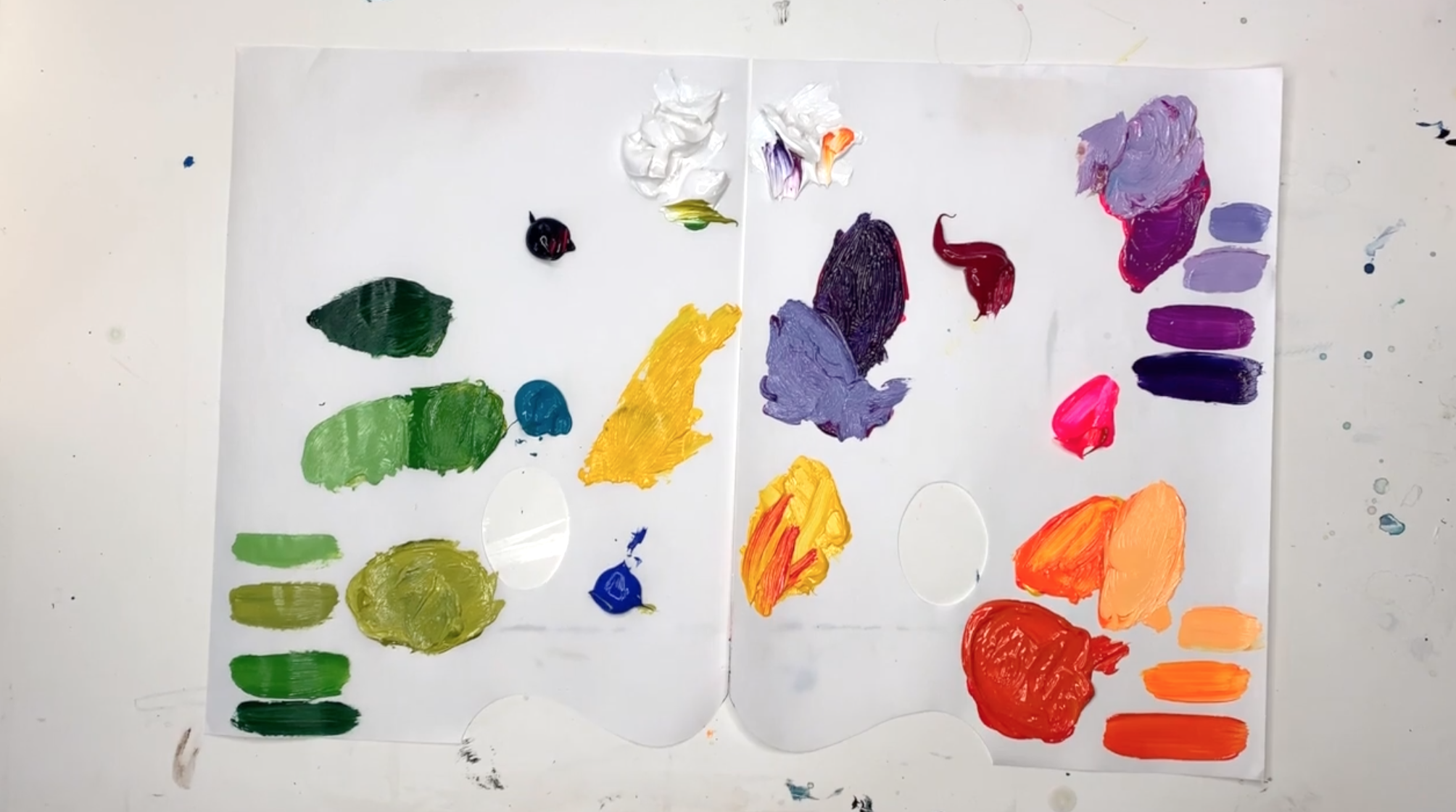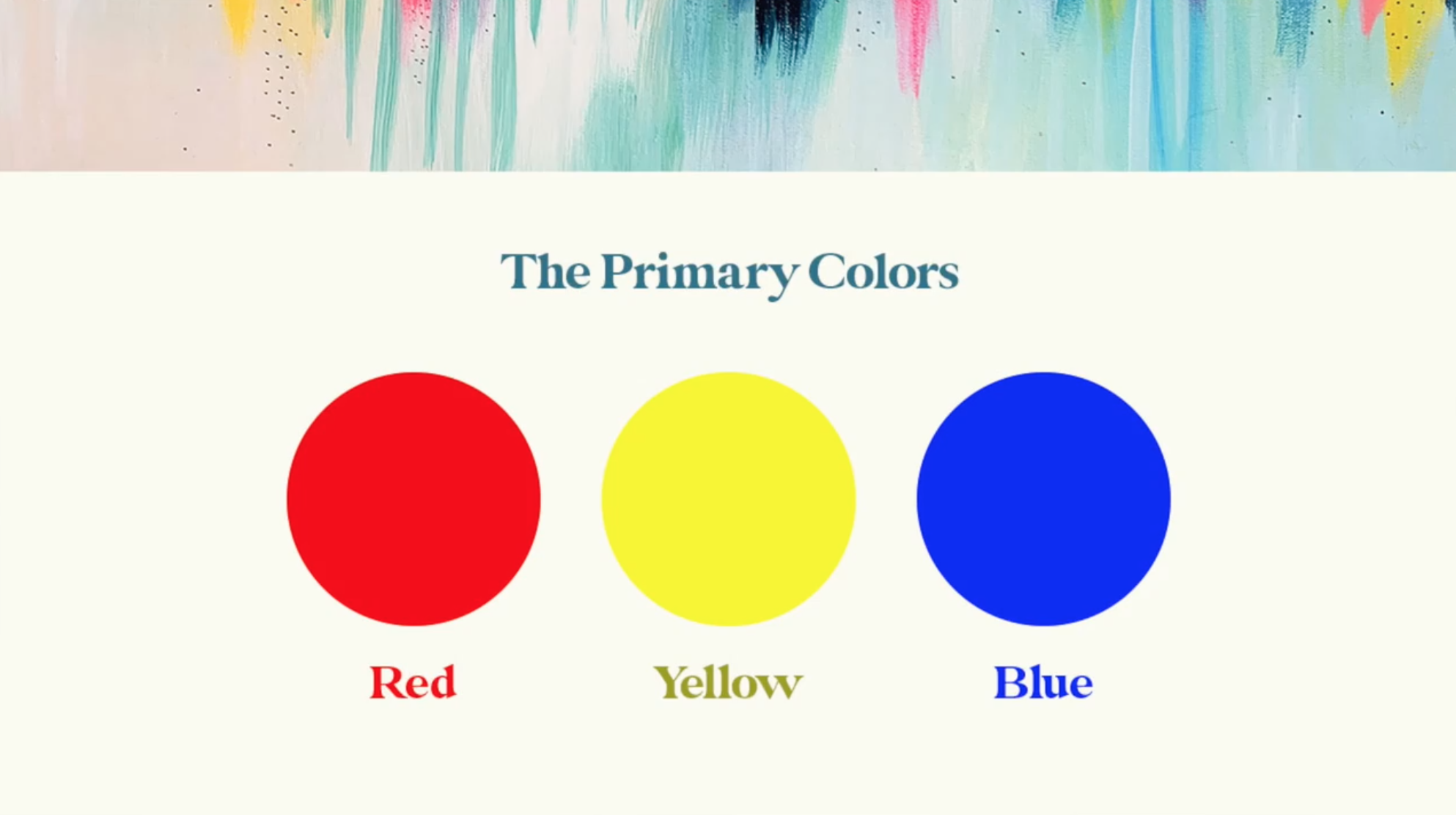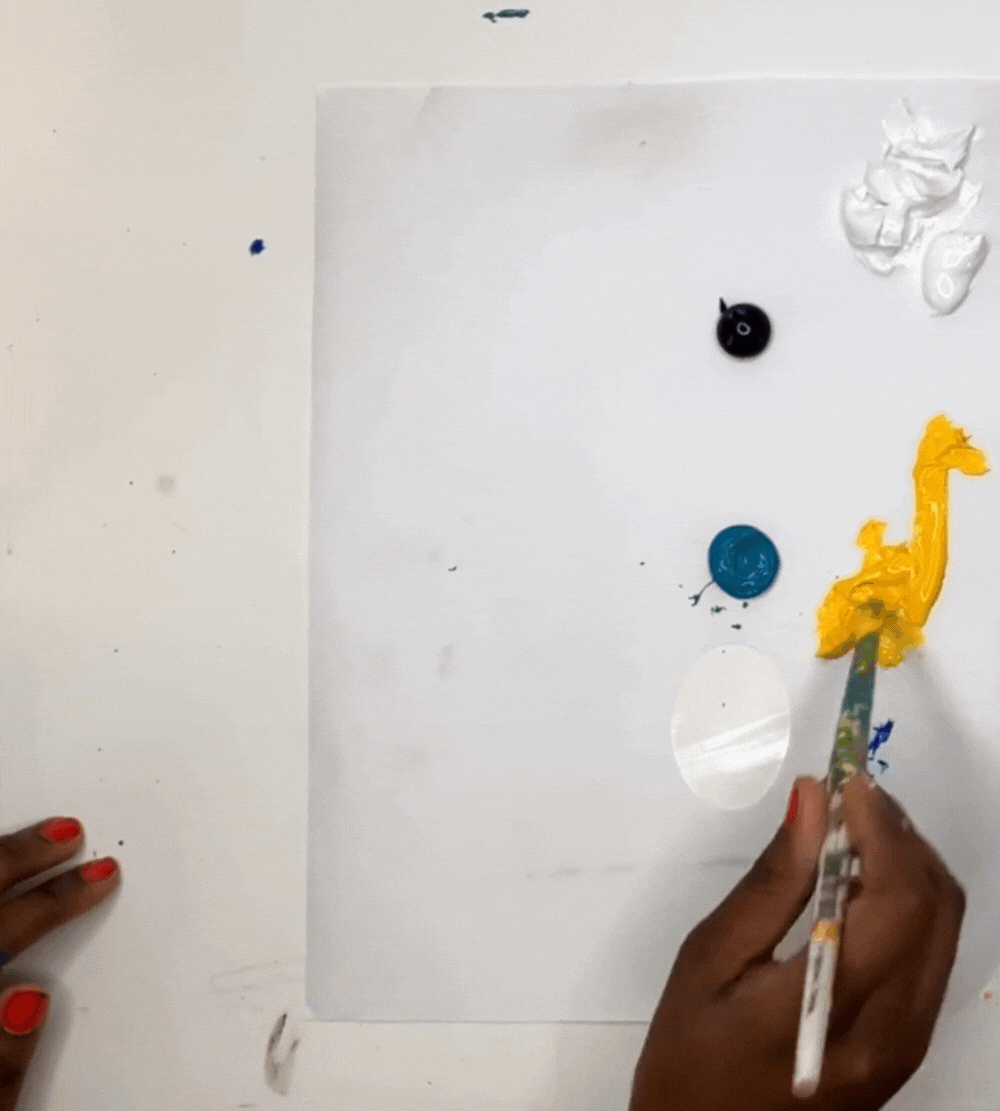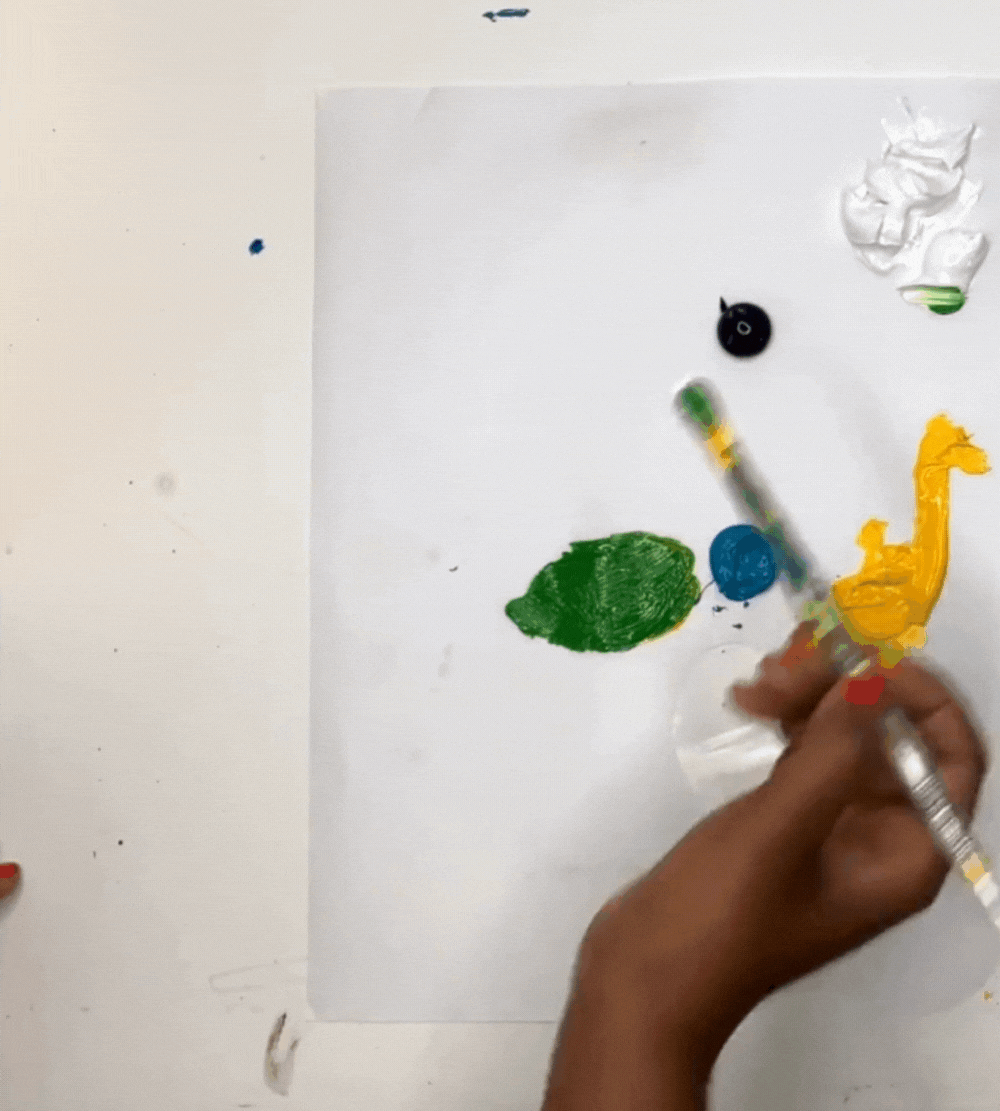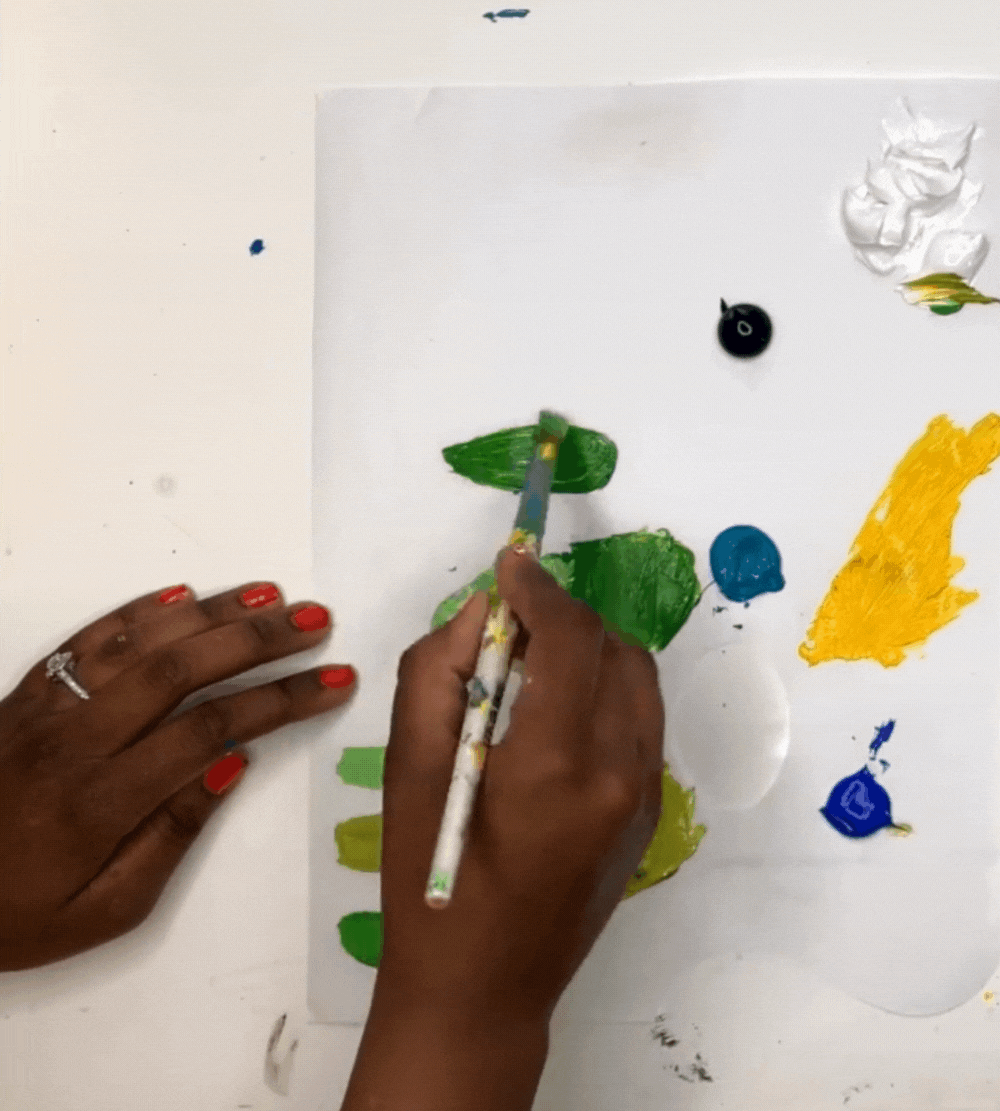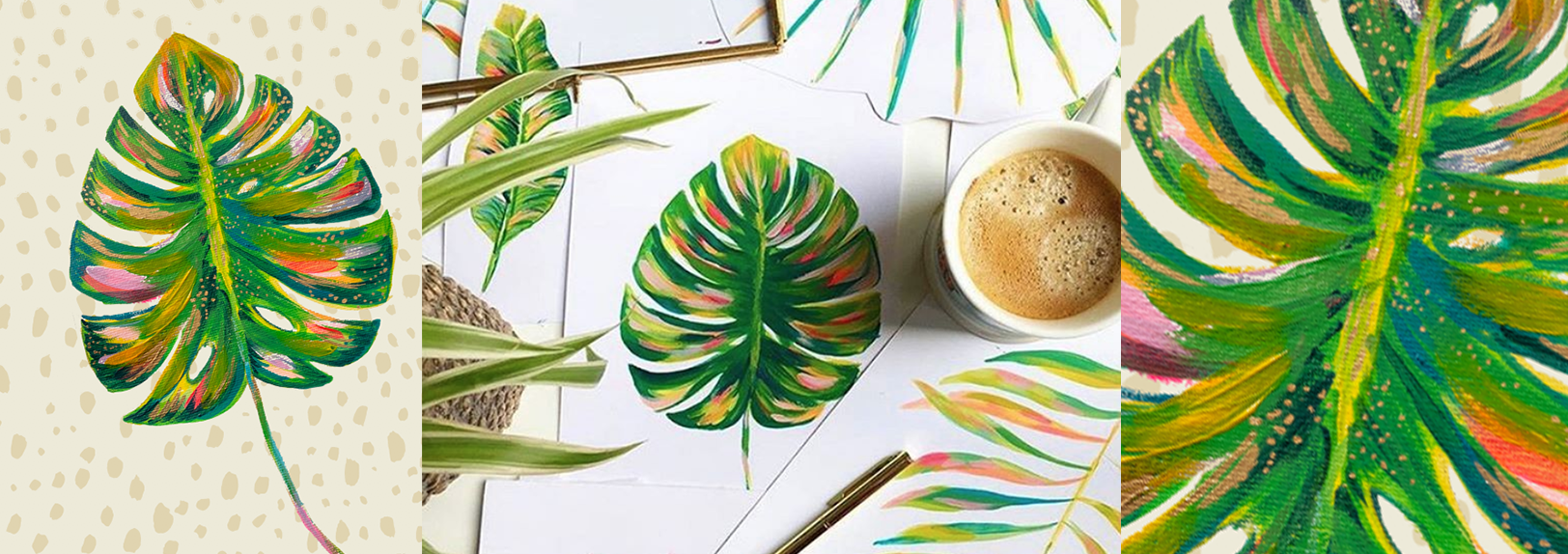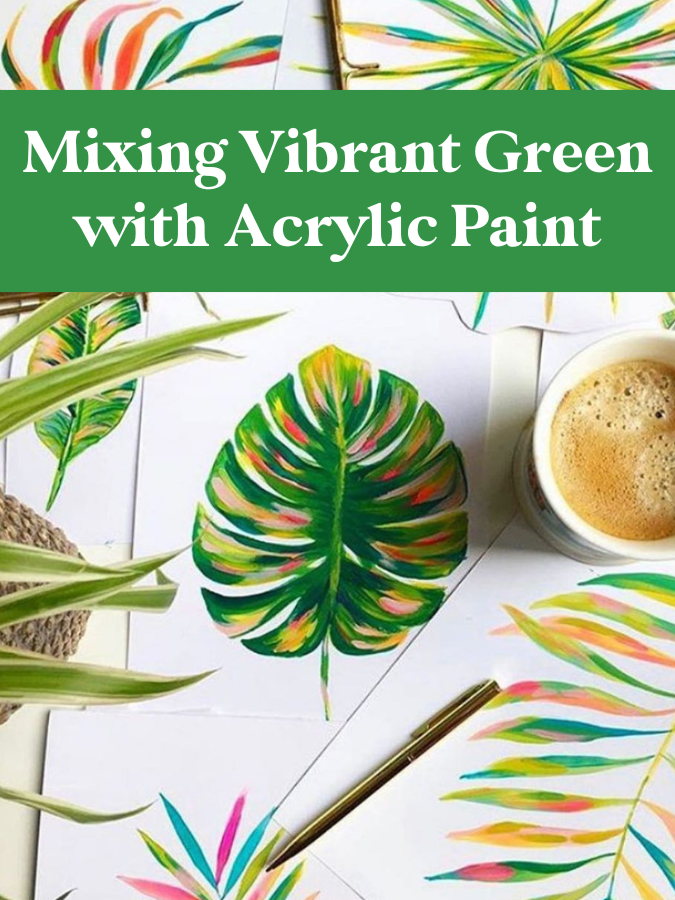How to Mix Vibrant Green With Acrylic Paint
Color mixing with acrylic paint can be tricky to learn, but it’s so rewarding. By mixing your paint colors, you’re able to achieve much more vibrant and unique hues than colors right out of the tube. My signature style is to paint with bright, vibrant colors, so I mix my paint colors the majority of the time.
In this tutorial, I’ll walk through mixing green with acrylic paint. Green can be a tricky color to mix since it can often end up muddy or dull-looking. But this has everything to do with the type of paint you're using and the ratio of the colors that are mixed together. You’ll learn how to make vibrant green colors in this tutorial so you can stop mixing muddy greens!
Mixing Green - The Basics
The foundation of color mixing is the three primary colors – red, yellow, and blue. By mixing these primary colors together in different combinations you can create all the colors of the rainbow. The colors that make green are yellow + blue. If you have primary yellow and primary blue in your paint set, you’ll be able to mix green!
My favorite colors for mixing vibrant green
The only problem with using primary colors for color mixing is that the colors they produce end up looking a little dull and muddy. I personally use a different set of primary colors in my paint kit! After years of experimenting with different color combinations, I’ve finally come up with three that produce the most vibrant acrylic colors!
Turquoise Blue
I use Turquoise Blue instead of Primary Blue. It’s dark enough to create beautiful deep shades for cooler colors, without them verging on looking muddy.
Primary Yellow
I stick with the basics when it comes to yellow. This helps balance the turquoise and keep the greens in the right hue family. It is bright enough to create vibrant hues and mixed with the magenta and turquoise it produces great results. If I ever need to add more vibrancy to a warm tone, I tend to add a fluorescent color to help make it pop.
Quinacridone Magenta
We won’t use this for mixing green, but I wanted to note it just in case. This is my alternative to Primary Red. This Magenta can still produce beautiful and rich shades, but unlike Primary Red, it helps bring the colors more towards the “jewel tone” space. I use a lot of purples in my work, and primary red can sometimes be a bit too warm and it muddies up the purple. Magenta is a great alternative because it is already mixed with the warmth of the red but incorporates some of the cooler tones as well.
The other colors you will need for mixing green are Titanium White and Prussian Blue, and Cobalt Blue. The white and Prussian Blue will serve as the dark and light colors used to change the value of the green shades you make. The Cobalt Blue will help create a more earthy olive green color.
Squeeze out some of each color onto your palette, and we’ll start mixing! I use a brush to mix my colors, but you can use a palette knife or whatever you’re comfortable with!
Now let’s dive into some specific color recipes for mixing green!
How to make bright green
First up, let’s mix a bright, vibrant green! To mix this green, take some of your yellow, and a tiny bit of turquoise blue. Blues have a much stronger hue than yellow, so a little goes a long way.
Always start with your lighter color. Adding a dark color to a light one makes for a better mixing experience. If you started with blue and added yellow to it, the yellow can have a tendency to get swallowed up by the stronger blue color. So start with yellow when mixing green. I also prefer to mix little by little so that I don’t overdo it on my mixing.
Primary Yellow + Turquoise Blue
How to make light green
To mix light green, simply take some of your white and add it to the bright green you just mixed.
Primary Yellow + Turquoise Blue + Titanium White
How to make mint green
If you want to create a minty green, you can add a tiny touch more of your turquoise to the light green you just mixed to give it a bit more of a blue/mint hue.
Primary Yellow + Turquoise Blue + Titanium White + A tiny bit more Turquoise Blue
How to make olive green
For mixing olive green, take a good amount of primary yellow and add a tiny bit of cobalt blue to it. This will result in a deep olive green. If you want to lighten it up a bit add some titanium white to create a light olive green.
Primary Yellow + Cobalt Blue + Titanium White
How to make dark forest green
To achieve a dark forest green color, start with a base of the initial bright green that we mixed. Take primary yellow and mix a little bit of turquoise blue into it. From there add a touch of Prussian blue to darken it. With Prussian blue, a little goes a long way, so be sure to mix this one little by little!
Primary Yellow + Turquoise Blue + Prussian Blue
If you’re wondering what to do with all these lovely greens you’ve mixed, I’d love for you to join me in my Monstera Leaf class where you’ll learn how to paint a vibrant, tropical leaf with fun pops of color.
And if you want to learn more about vibrant color mixing, check out this blog post where I dive into more detail about mixing an entire rainbow of vibrant colors!
xo, Jessi
Pin this post for later! 📌
Hover or tap on this image and click the “Save” button on the top left!

